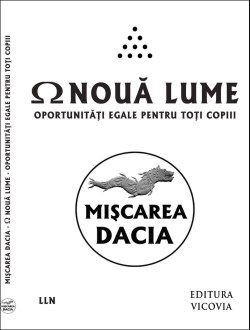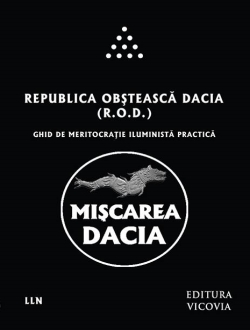What Constitutes Existence?

What Constitutes Existence?
Many philosophers and religious thinkers have proposed endless ways to describe the basic nature of existence. So, let’s play the God Game. If you were God, which of the following options would you have chosen? We shall take an incredible tour of the multitude of options available to God.
Materialism: “The world … is corporeal, that is to say, body … and every part of the universe is body, and that which is not body is no part of the universe.” – Thomas Hobbes
Idealism: Everything is mental; the material world is ultimately mental.
Panpsychism: all matter has a mental aspect; mind is everywhere; all entities have a unified centre of experience; all entities have their own unique point of view (perspective); all parts of matter involve mind, or more holistically, the whole universe is an organism that possesses a mind; the idea that all matter is imbued with some (greater or lesser) form of consciousness.
The distinction between idealism and panpsychism is that the latter treats everything as mind or as containing mind whereas the former treats things as content of the mind. In panpsychism, a rock, for example, has a mind (albeit rudimentary and unconscious) whereas in idealism, a rock has no independent material existence but is merely a mental phenomenon – an idea in a mind. In panpsychism, a rock doesn’t vanish if the mind perceiving it dies. In idealism, the rock is dependent in the mind’s perception of it, so “dies” when the mind dies. In other words, panpsychism allows for the objective existence of things whereas idealism is purely subjective (all apparently objective things are contained within subjective minds, and do not exist without the subjective minds that sustain them).
Illuminism agrees with idealism that mind and not matter is the basis of reality, but Illuminism is fundamentally an expression of panpsychism. “Panpsychism is the view that the basic physical constituents of the universe have mental properties” — Thomas Nagel
Dualism: the view that mind and matter have independent existence and neither is reliant on the other or originates from the other.
Panpsychism is sometimes seen as dualist since it attributes mind to matter, thus acknowledging the objective existence of matter, and regards everything as having both mental and physical properties. In Illuminism, mind and matter are both mathematical and matter is in some sense “solid” mind i.e. matter is an expression of mind. It has different mathematical characteristics: above all the number zero is excluded from material existence yet defines mental existence.
“In the matter of consciousness, the position of Empedocles may be defined as a rigorous panpsychism. In his view, which seems to be shared to some degree by most early Greek thinkers, the faculty of feeling, perception, and thought does not constitute a prerogative of men and animals, but is assumed to be distributed generally throughout the natural world. From this point of view, there is really no such thing as inanimate nature. The character of any object is conceived of as a vital urge that may be described in terms of thought and volition. This conception is analogous to the ‘animism’ which is said to characterise the attitude of many primitive peoples in their dealings with nature. But the animism of Empedocles is scarcely primitive: it is explicitly formulated as a philosophic principle. He ends the poem On Nature with a warning to his friend Pausanias that the truths communicated must be carefully borne in mind, or else they will leave you all at once, when their times come round, yearning after their fellows, to return to their own dear kind; for know that all things have intelligence and a share in thought. This statement implies a systematic parallelism between physical objects and mental conceptions. Not only does everything have a share in thought, but every thought is treated like a thing. Apparently Empedocles recognizes no radical distinction between the two, for the constituents of the physical world and our perception of this world are described in the same terms:
By earth we behold earth, by water water,
by air bright air, by fire, ravaging fire,
love by love and strife by gloomy strife.
For out of these are all things compounded
and fitted together and with these do they think
and feel pleasure and pain.”
— Essays in Ancient Greek Philosophy, Edited by John P. Anton with George L. Kustas
Reductive panpsychism reduces all material properties to mind.
Reductive physicalism does the opposite and reduces everything to matter.
Reductive physicalism is essentially materialism: everything in the world can be reduced analytically to its fundamental physical, or material, basis. All mental states and processes can be reduced to physical states and processes. All organic and inorganic processes can be explained by reference to the laws of physical nature.
Illuminism, on the other hand, reduces everything, mental and material, to mathematics and asserts that all organic and inorganic processes can be explained with regard to mathematical laws of existence.
Neutral monism: this is the view that the mental and the material are two different perspectives of the same underlying thing, which is itself “neutral” i.e. neither physical nor mental. So, this stance rejects the view that the mental and the physical are two fundamentally different things and asserts that there is only one fundamental “stuff” in the universe (hence why it’s a monism). Neutral monism was first propounded by Spinoza who proposed that mind and matter were two attributes of God (the underlying monism), although Spinoza’s view might better be called dual-aspect monism:
“In strict parlance, neutral monism should be distinguished from dual-aspect monism, which holds that all existence consists of one kind (hence monism) of primal substance, which in itself is neither mental nor physical, but is capable of distinct mental and physical aspects or attributes that are two faces of the same underlying reality in the one substance. … The theory’s relationship to neutral monism is ill-defined, but one proffered distinction says that whereas neutral monism allows the context of a given group of neutral elements to determine whether the group is mental, physical, both, or neither, double-aspect theory requires the mental and the physical to be inseparable and irreducible (though distinct).” — Wikipedia
Schopenhauer, like Spinoza, is a dual-aspect monist. In Schopenhauer’s philosophy, there is only one substance (Will), but it manifests itself physically (phenomenally) and mentally (noumenally), with each being the flip side of the other.
Illuminism might be considered a dual-aspect monism. Mathematics is the ground of existence (the monism) and takes the form of infinite mathematical points, inbuilt with the laws of mathematics. Since a monad is a rudimentary mind, mind and mathematics are intimately connected. Mind can be considered as subjective mathematics – how it feels to be a mathematical entity; the inside perspective; the inner experience – while matter is objective mathematics, subject to the laws of what humanity calls science. Subjective mathematics is the within of mathematics while objective mathematics is the without.
It is a primary axiom of Illuminism that all of the fundamental units of existence are subjective when experienced internally and objective when viewed externally. Everything is a subject to itself, but an object to everything else. If a subject acquires a body (as in a human being) then that constitutes its objective presence in the world, while the mind is its subjective presence.
William James also developed a neutral monist view, and is perhaps the classic expression of that view. Bertrand Russell said, “James’s view is that the raw material out of which the world is built up is not of two sorts, one matter and the other mind, but that it is arranged in different patterns by its inter-relations, and that some arrangements may be called mental, while others may be called physical.”
Panpsychism can be readily combined with neutral monism. Illuminism is the stance that mathematics is the basis of mind and matter, hence mathematics is the neutral monism in that sense. Each mathematical point is regarded both as a unique mind and as fundamental building block of the material world. (Many of these definitions flow in and out of each other or form a continuum rather than clear-cut distinctions.)
Holism: the view that the whole Universe is an organism that possesses a mind. Equivalent to a certain view of panpsychism.
Animism (from Latin anima “soul, life, mind, breath”; similar in concept to Greek words such as psyche and pneuma): the view that all things have a soul; all animate and inanimate objects possess individual, innate souls; the hypothesis first advanced by Pythagoras and later promoted by Plato that an immaterial force animates the universe (the World Soul).
Animism is the belief that non-human entities are spiritual beings, or embody a life-principle. In this view, there is no separation between the spiritual and physical worlds. Souls/spirits exist not just in humans, but also in all other animals, plants, rocks, and all natural phenomena. Thunder and lightning have souls. Mountains, rivers, woods, stars, planets, galaxies, black holes – they all have souls. The universe is a vast network of ensouled creatures. Personalized supernatural beings (or souls) occupy all objects and govern their existence. Just as a human body is said to have a soul, all bodies of any type at all (including inorganic bodies) also have souls, although of very different mental character. Animism is the view that spirits inhabit the universe in all of its parts.
Extreme animism attributes souls even to abstractions such as words, true names (which have tremendous power in the occult world), and mythological symbols. Shinto, Hinduism, Buddhism, Taoism, Pantheism and Neopaganism all have significant animistic tendencies.
Illuminism is a type of animism since it teaches that living (but unconscious) monads are the source of everything in the world. However, while animism assigns consciousness to all things, Illuminism does not. Illuminism is about the unconscious mind evolving towards consciousness as its highest manifestation.
In Illuminism, unconscious monads are the building blocks of existence. Existence is predicated on fundamental units of mathematical life. Ontological mathematics is alive. All mathematical functions and signals produce an inner experience in the living monads affected by them.
Animism was the first religious system conceived by the human mind and, when equated with ontological mathematics, becomes supremely powerful. However, when associated with primitive beliefs and superstitions, it degenerates into the monotheistic Abrahamic system that there is one single and all-unifying animating force in the universe – God, the Creator.
Abrahamism is animism taken to its extreme position in terms of conscious design of the universe. Illuminism is animism taken to its extreme position in terms of unconscious, teleological evolution of the universe.
Science disregards animism completely, and is thereby incapable of explaining how life comes from non-life. It should be noted that life/non-life dualism is just another way of talking about the mind-body problem. Life and mind are effectively synonymous. You are alive if you have a mind, even if that mind is rudimentary and unconscious.
Illuminism solves mind-body dualism by demonstrating that the body originates in mind (i.e. there is no separate material world). It solves the life/non-life problem by demonstrating that everything is alive (i.e. there’s no kingdom of dead things that are somehow assembled like Frankenstein’s monster into living beings). Existence MUST be monistic. There can be no existential dualism.
Science claims to be a monistic materialism, but philosophically it is radically dualistic since it cannot offer any viable mechanism to account for how mind comes from non-mind or life from non-life. Although science claims that life and mind are materialistic phenomena that originate in more elemental materialistic phenomena, in reality the gulf between mind and non-mind and life and non-life is infinite.
Descartes’ philosophy failed because of its dualism. Either matter must be fully explained by mind, or mind by matter. Illuminism is the proof that matter is ultimately mental and not physical. Science, on the other hand, has wholly failed to prove that mind is ultimately material.
Excerpt from The God Game
Mike Hockney
Artwork by Yuliya Zelinskaya











